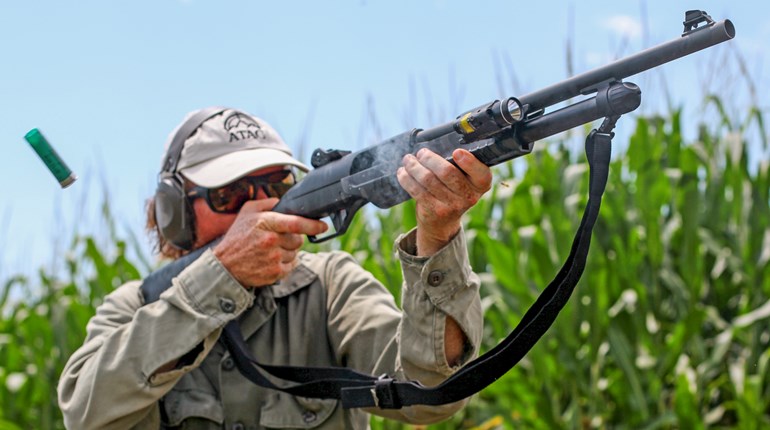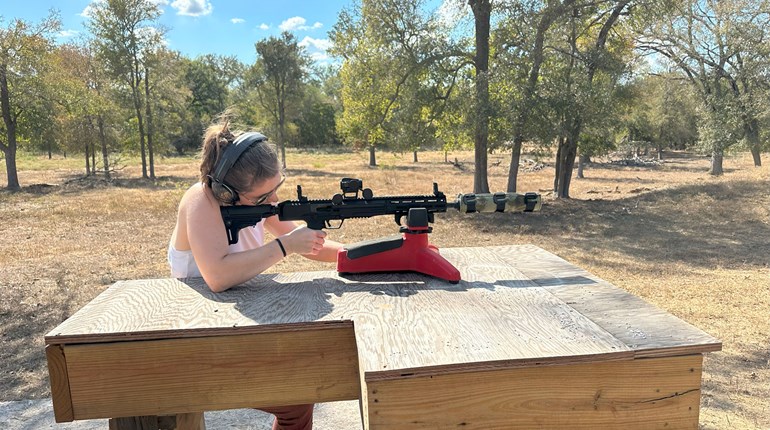
Although a testament to the system's popularity, it is possible to have too much of a good thing—hence the black rifles with over-encumbered fore-ends of assorted flotsam we've all encountered.
Unfortunately, what started as a practical means of integrating optics to ARs has degraded over the decades as people try to see just how much tacticalia they can hang from their rifles. Thankfully, Grauer Systems' Integrated Grip Rail System (IGRS) suggests a turn of the proverbial tide.
The IGRS' flared magwell enables shooters to quickly load their rifle under stress—without diverting attention from a threat. However, there's more to it than that. Combat footage reveals soldiers occasionally grip their M16s different from their training—grasping the front of the magazine area with their non-shooting hand. This "magazine hold" is often used even with vertical foregrips installed. Grauer attributes this phenomenon to it being more ergonomic and intuitive than gripping an M16's forearm traditionally, due to more-efficient shoulder, wrist and hand positioning—and greater tacticle feedback concerning muzzle direction. But, it offers minimal controllability. Also, the non-shooting hand braces the magazine, creating greater likelihood for malfunctions.
The IGRS effectively extends the magazine hold 2.5 inches forward, mimicking the feel of the hold while eliminating the need for a vertical foregrip and providing much-needed purchase. Increased distance between hands provides greater controllability, positioning the non-shooting hand at a more-centralized balance point on the rifle. It benefits the supporting shoulder, because it doesn't require shooters to bear the weight with an extended arm like a vertical grip. Instead, the IGRS places the supporting arm closer to the body, making it easier to support the rifle with minimal effort.
According to Grauer CEO John Brixius, most shooters typically wrap their thumb around a foregrip, placing the web of the hand behind it. Confusion results as to the proper amount of exertion, resulting in varying wrist pronation, inadequate control and poor recoil management. The IGRS resolves this while aiding precision.
The magwell provides ample purchase for a variety of supporting holds, placing the hand closer to bore axis than vertical foregrips. The 3- and 9-o'clock positions contain adjustable thumb rests for shooters desiring the enhanced precision and stability of a three- or two-fingered hold. Their forward-most edges are beveled—a small-but-relevant feature that could be useful when designated marksmen need to brace the rifle against a wall's corner.
The IGRS' multi-purpose magwell frees space on the 6-o'clock rail for essential accessories, like dedicated weaponlights and lasers. One less item on the fore-end keeps the rifle from becoming nose heavy, while minimizing accessory-related bulk. The 6-o'clock rail is removable for snag-free routing of pressure-pad switches.
While appearing similar to a quad-railed AR-style handguard, the IGRS reintroduces some much-needed practicality to the AR platform through more than a simple railed fore-end.





































